Remarkably, considering that this mosque was built for one of the most powerful women in Ottoman history, you might expect it to be a grand, monumental structure. However, in stark contrast, the Cinili Mosque is small, nestled in a residential area of Üsküdar, far from the tourist routes.
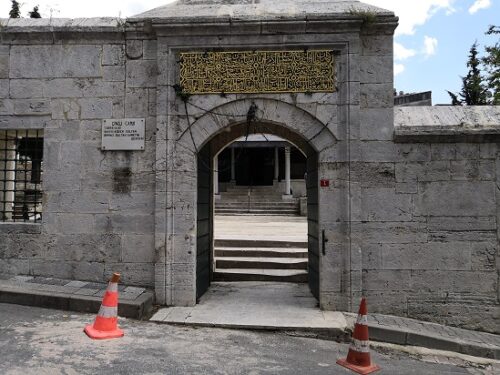
OTTOMAN IMPERIAL MOSQUES
Ottoman sultans or members of the imperial dynasty commissioned these monumental complexes. They were usually constructed as külliye, multi-functional complexes centred on a mosque, surrounded by madrasas, kitchens, baths and other charitable institutions serving the community.
The great imperial architect Mimar Sinan, master architect of the Ottoman Empire for nearly 50 years, designed many of the still-standing külliye in Istanbul. He set the standard for mosque and complex architecture.
Imperial mosques were also built in other Ottoman cities, including Bursa, Edirne, Konya, Amasya, Manisa and even Damascus.
CINILI MOSQUE
In Istanbul, there are several historic sites connected to Kösem Sultan. One of them is the Cinili Mosque in Üsküdar. I can confidently say that, despite its size, it is one of the most beautiful mosques that I have seen in the city.
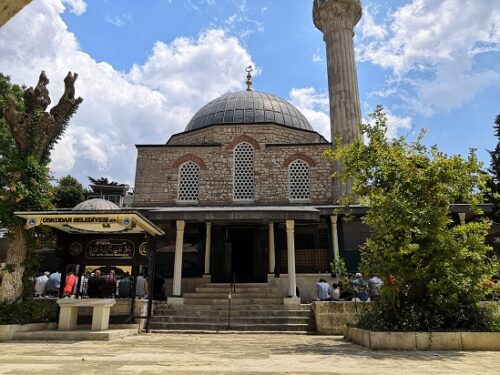
Kösem Sultan commissioned the construction of the Cinili Mosque, which was completed and opened for prayers in 1640. Given Kösem’s immense influence and stature, one would really expect a larger, more imposing structure. But instead, this charming mosque resides in a modest, residential area of Üsküdar.
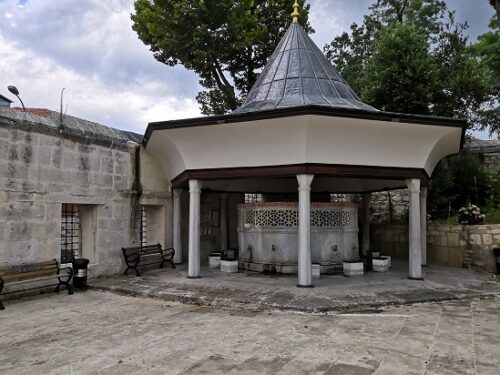
The mosque is particularly famous for its stunning interior, adorned with exquisite Kütahya tiles. These tiles, renowned for their designs and vibrant colours, transform the interior into a visual feast. No photograph can fully capture the beauty of the mosque’s interior. To truly appreciate the artistry, you must visit in person and take in the details and the harmonious patterns that adorn the walls and ceilings.
It is one of those places that demands to be experienced in its entirety, to truly understand the care and effort invested in its creation.
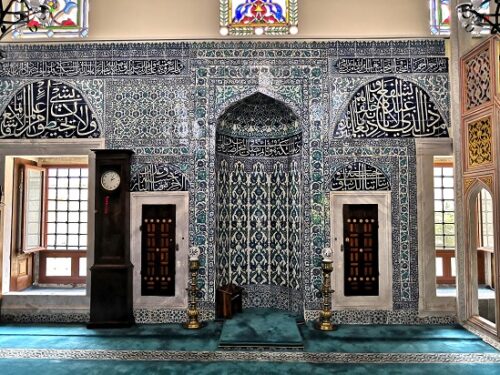
In fact, the mosque’s name çinili derives from the word çini, meaning tiled in Turkish. While I refer to it as the Cinili Mosque in this post, this is a slight modification for the sake of SEO, as the Turkish letter ç doesn’t exist in English. This alteration ensures that search engines can easily recognise the term, making the post more accessible.

The Büyük Valide Han, the largest historic han near the Grand Bazaar, also built by Kösem Sultan, funded the upkeep and maintenance of this small mosque complex.
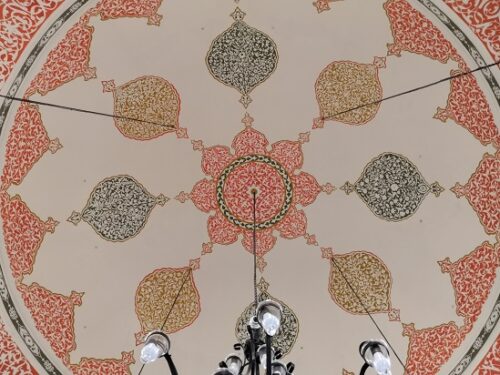
CINILI HAMMAM
The Çinili Hammam was also built in 1640 and it is immediately next to the mosque. It’s a functional historic bath house.
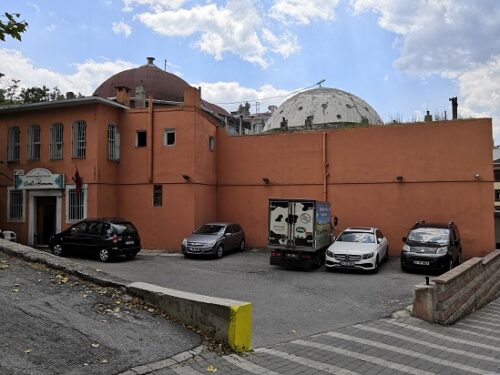
IS CINILI MOSQUE WORTH A VISIT?
Absolutely. Although it requires a bit of effort to reach, it is well worth the journey. It is unlikely that many tourists will venture deep into the residential areas of Üsküdar, to discover this hidden gem. But for those with deep interest in Ottoman history or a desire to explore beyond the usual tourist spots, this mosque is a must see.
If you are already in Üsküdar exploring other Ottoman sites, make sure to visit the Atik Valide Mosque. The Cinili Mosque is just a short walk away, making it easy to see both of these splendid historic buildings. They are key examples of the fascinating Sultanate of Women period in Ottoman history.
Visiting both sites will give you a richer understanding of this unique chapter in the Empire’s history, offering insights into the political, cultural and architectural legacy of one of the most powerful female figures of the time.
Back to Turkey


